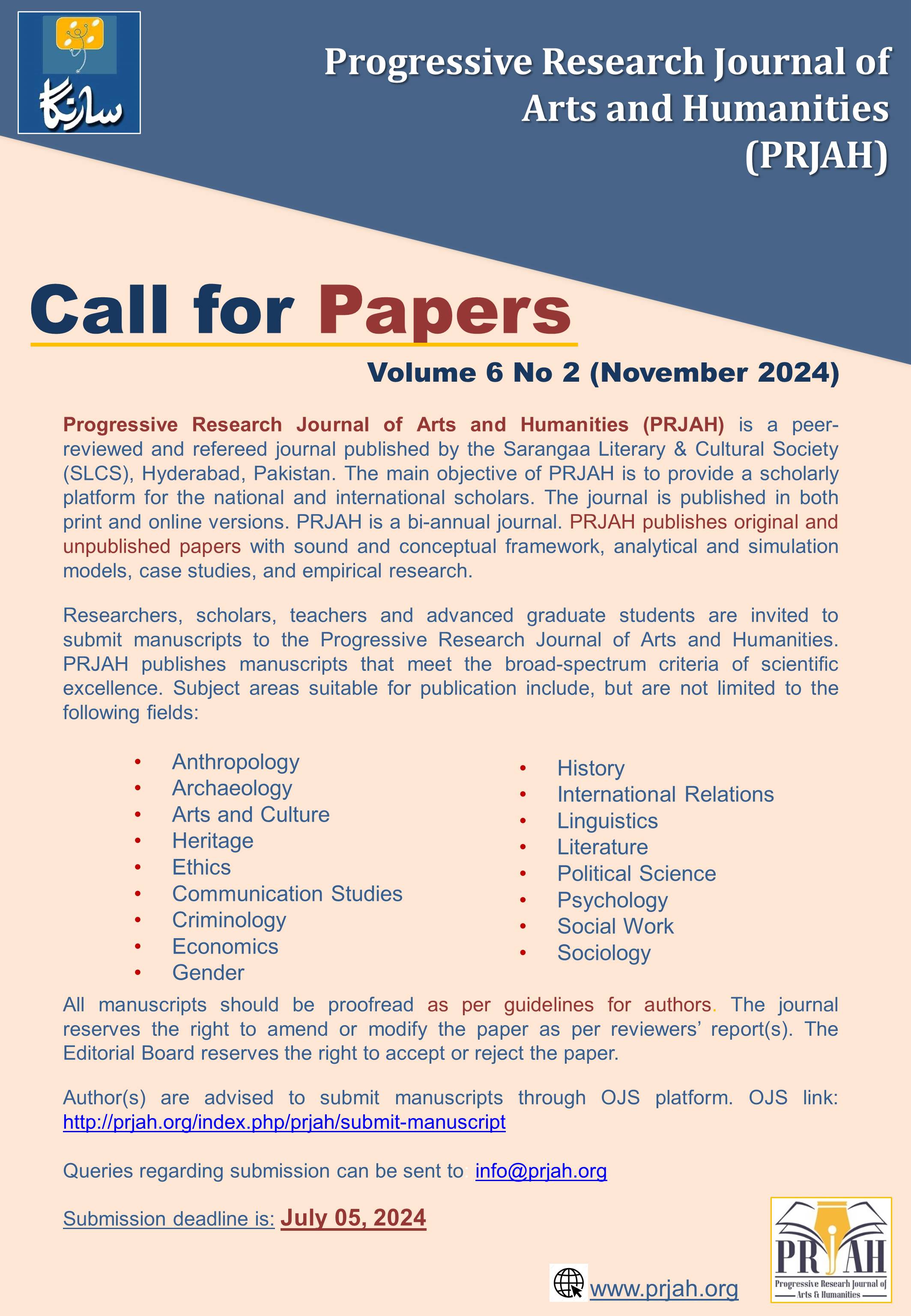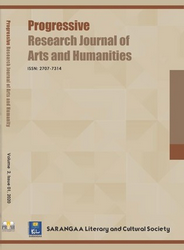Death Works as a Living Character in Emily Dickinson's Poetry
Keywords:
Death, Union, Soul, Mortality, ImmortalityAbstract
This paper aims to explore the themes in Emily Dickinson’s poetry to examine how death works as a character in her poetry. Emily Dickinson’s poems Behind Me Dips Eternity, Death is a Supple Suitor, Death is Like the Insect, I heard a Fly buzz - when I died, I know He exists, Said Death to Passion and This World is not Conclusion are chosen to analyse in order to carry out the research. This paper revolves around the hypothesis that in Emily Dickinson’s poetry death works as a living character. The selected poems are analysed on a qualitative basis, whereas textual analysis with close reading is used to find out Death description along with a discussion. The results show that in Emily Dickinson’s poetry death works as a character that works as an agent in different forms who will unite her with God; in fact, she is not obsessed with death but is obsessed with God. Death is just a character that will help her unite her with Him. In her poetry, Death has been used as a symbol of compassion. Besides, Death has been personified as a kind of compassion. Throughout Emily Dickenson’s poetry, Death is analysed as a connectivity from the mortal world to the immortal. In this study, the qualitative approach is used to analyse Emily Dickenson’s poetry in depth.References
Ali, N. M. (2009). Images of Death in the Poetry of Emily Dickinson. Al-Bahith Al-Aalami(5), 1-10.
Bhattacharya, R. (2014, April). The Rebellion against God: Emily Dickinson’s Influence on Allen Ginsberg. Journal Of Humanities And Social Science, 19(4).
Bushgjokaj, D. A. (2015, April). Conversations with Nature: God, Nature and the Self, in the Poems of Emily Dickinson. International Journal of Arts and Commerce, 4(4), 9-22.
Cash, P. (2010). Emily Dickinson (Vol. 7). Hollywood Dove: English Association Bookmarks.
Chari, N. (2014). Emily Dickinson's Conversational Tone, A Precursor to Twentieth Century English Literature. Research Journal of English Language and Literature (RJELAL), 2(2), 140-143.
Dickinson, E. (1945). The Complete Poems of Emily Dickinson (T. H. Johnson, Ed.). Little, Brown.
Gire, J. (2014). How death imitates Life: cultural influences on conceptions of Death and Dying, Online Readings in Psychology and culture, 6(2) https://doi.org/10.9707/2307-0919.1120
Rajesh, C. A. (2013, October). A view of death in Emily Dickinsosns Because I could not stop for Death. International Journal of English and Literature, 3(4), 111-113.
Mayer, N. (2013). Evasive Subjects: Emily Dickinson and Charlotte Bronte's Lucy Snowe (Vol. 22).
Hirai, M. (2006). The poetics of absence (Unpublished undergraduate thesis). Graduation.
Doost, N. Z., & Jamili, L. B.. (2014). Visualization of Death and Actualization of Identity in Emily Dickinson's Poetry. International Research Journal of Applied and Basic Sciences, 8(5), 67-623.
Omana Antony, S. D. (2012, Autumn). Emily Dickinson’s Perspectives on Death: An Interpretation of Dickinson’s Poems on Death. Lapis Lazuli -An International Literary Journal, 2(2), 0-1.
Paul T.P Wong, A. T. (2011). Beyond Terror and Denial: The positive Psychology of Death acceptance. Taylor and Francis Online, 35(2), 99-106.
Pollak, V. R. (1979, March). Thirst and Starvation in Emily Dickinson's Poetry. American Journal, 51(1), 33-49.
Premlatha. (2012, October). Love and Death in Emily Dickinson’s Poetry. Pariplex-Indian Journal of Research, 1(10), 107.
Shafak, E. (2009). The Forty Rules of Love. Istanbul: Penguin Books.
South, James B. (2012). "Suarez immortality and the Soul's Dependence on the Body", Philosophy Faculty Research and publications, 265. https://epublications.morquette.edu/phil-fac/265.
Thackeray. (1954). Emily Dickinson’s Approach to Poetry. Lincoln, New York.
Downloads
Published
How to Cite
Issue
Section
License
Copyright (c) 2025 Progressive Research Journal of Arts & Humanities (PRJAH)

This work is licensed under a Creative Commons Attribution 4.0 International License.






